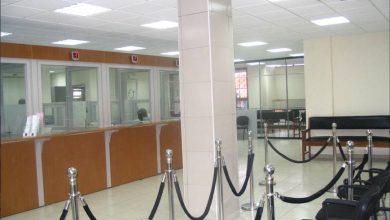Reshaping engineering beyond 50
Engineering is one profession worth celebrating for countless reasons. It simply cannot be ignored in any society. From infrastructure such as beautiful homes, sky-scrapers and the roads we use to information and communication technology (ICT) gadgets including mobile phones, vehicles and all we treasure and value, there is a hand of an engineer.
My entry this week is dedicated to local engineers who took time off their tight schedules to reflect on their contribution in the past years and shaping the future under the auspices of the Malawi Institution of Engineers (MIE).
This year, MIE held the Annual Engineers’ Conference in the lakeshore resort town of Mangochi under a well-thought theme of ‘Malawi @ 50: Honouring the Past, Treasuring the Present, Shaping the Future.’
Personally, I know scores of engineers making a difference out there. They include Dr Matthews Mtumbuka, Washington Chimuzu, Dr Witness Kuotcha, Engineer Robert Hanjahanja, Joe Nomale and Bennie Chisuse.
Besides, I also like to watch television series or is it documentaries about ‘Engineering Disasters’ across the world. It gives an insight on what went wrong or might have gone wrong for a structure not to hold its own. Closer home, the collapse of the building that used to house Kips Restaurant in Blantyre is one example of an ‘engineering disaster’.
While I congratulate MIE for a successful conference, my plea to the current MIE leadership is for the grouping to be proactive and lead the way on engineering matters. MIE is an authority; hence, it should avoid situations where some “copycats” go about tarnishing the image of the engineering profession.
Of course, I am mindful of MIE’s lamentations before that it was facilitating the repealing of the Engineers Act to empower it to be recognised and have influence in the country’s policies.
In some cases, there are scenarios where lay persons like me wonder whether engineers were consulted or involved in the conception of a project.
Here I have in mind some road projects in Blantyre and Lilongwe whose designs seem to ignore the fact that “life begins at 40” and that at 50, Malawi has come of age and should be planning beyond the present.
Take for example the Lilongwe West By-pass Road which branches off the M1 at Bunda Turn-Off across the Likuni Road to join the Lilongwe-Mchinji Road near Malawi Revenue Authority (MRA) offices. This road is said to be part of the Nacala Development Corridor and it is designed to divert traffic from town going up North and Zambia. This is a good initiative, but seriously, in 2014, should such a road be a single-lane?
Further, it baffles me that Kaunda Road, the current hub of developments in Lilongwe, seems to be ignored. This road, which starts from the newly-constructed round-about where the Lilongwe West By-pass Road joins the Lilongwe-Mchinji Road, is where developments such as the joint Chinese and Malawi Housing Corporation (MHC) residential estate and business centre Guoji Dream Town, National Stadium, Gateway Shopping Mall—touted to be the biggest in Malawi—and several others are taking place.
Sadly, the road set to handle increased traffic volumes is still the traditional single-lane drive. This is the time for MIE to impress upon authorities to seek resources for its expansion into a dual carriage highway to avoid congestion in future.
In Blantyre central business district, parking has become a nightmare worsened by “wrong parking” legalised by the Blantyre City Council which has “sold” some parts of the road as parking slots for corporations. Then from Maselema Round-about to Maone Park/Kachere, the section of Blantyre-Zomba Road has been narrowed.
Blantyre’s dual carriage Masauko Chipembere Highway is yet another ‘engineering disaster’ on some sections. I feel the section between Ginnery Corner Round-about and the Polytechnic as well as between Axa coach terminal and Kamuzu Stadium Round-about could be redesigned to have a third lane or “bus lane” so as to check the avoidable congestion created by minibuses in the absence of strict traffic control by responsible authorities.
Surely, these examples do not reflect “shaping the future” in terms of engineering.



